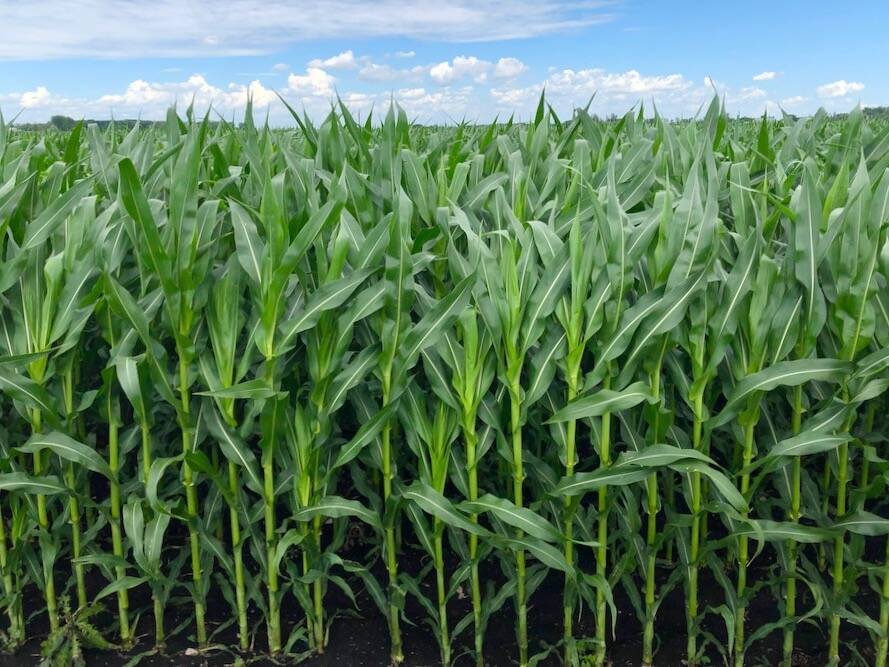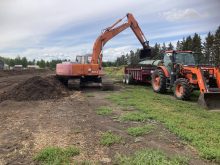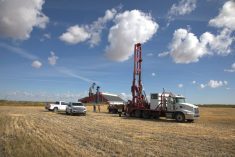There are ways to maximize your investment in soil testing, says Harry Brook, crop specialist at Alberta Agriculture and Forestry.
“Most producers test their soils routinely every fall, after harvest or early in the spring. Information from these tests gives you the knowledge to plan the following crop’s fertilizer plan,” he says.
Though there are several ways to test soil, the most common is the zero- to six-inch representative sample.
“You take 15 to 20-plus samples in a field, selecting various slope positions, to try and get a good average sample. From those mixed samples the field sample is taken and sent away, hopefully giving you a good average for the field,” Brook says.
Read Also

Nutrien pays farmers for efficient nitrogen
Nutrien’s Sustainable Nitrogen Outcomes (SNO) program pays Prairie farmers to limit nitrogen loss and, therefore, fertilizer-related greenhouse gas emissions.
Another approach is benchmarking, where you pick one or a few spots in the field, have it located on GPS and come back to that same location for samples every year. It doesn’t give you an average but it can give an idea as to how the field changes in nutrient levels, as long as a location is chosen that is average — it isn’t located at the bottom of the slope or right at the top but somewhere in the middle.
Brook says that with GPS technology, harvest records and precision agriculture, variable-rate fertilizing has been gaining popularity. This is where one tries to correlate the harvest yields to detailed soil tests.
“This can give a more detailed picture of the ultimate productivity of the soil but requires several years of data to filter out the extremes from weather and vagaries of the crop year,” he says.
Different procedures
Different test labs have different procedures and you need to know what applies to your area and soils.
An example of this is the phosphorus test. The accepted, accurate test for phosphorus in the Canadian West is the modified Kelowna test. If your soil test lab is using some other test, it might be better suited to soils in Eastern Canada and may give a misleading result.
“Macronutrients are the first thing you focus on from the tests. These are nitrogen (nitrate), phosphorus (phosphate), potassium (potash), and sulphur (sulphate). There can be differences in how it is reported as it is often stated in pounds per acre or parts per million (ppm). If using ppm on a zero- to six-inch sample, double the ppm to get your pounds per acre,” Brook says.
Micronutrients
Micronutrients to look at are mostly just copper (Cu). Amounts below 0.6 ppm may show symptoms of deficiency. Ergot in cereals is linked to copper deficiency but the majority of the time ergot also occurs due to moist, cool conditions at head emergence.
There is also a lot of hype promoting boron in canola. If you feel it might help, try a few test strips in the field and measure the results at harvest. Other than copper, most fields in Alberta do not show any symptoms of micronutrient deficiency and will not provide a yield boost if micronutrients are applied.
Organic matter (OM) is an important gauge of the nutrient bank account. High-organic-matter soils are much more forgiving if you cut your fertilizer rates for a year. It can compensate by providing more nutrients if the year is wetter than expected. Conversely, low organic matter in soil leaves it more susceptible to nutrient deficiencies. Very low organic matter leads to structural problems in soil with crusting and poor moisture penetration.
OM increases as moisture regime gets wetter so black soils contain more OM than the brown or dark-brown soils.
Soil pH is a measure of acidity or alkalinity. It is best at neutral, 7.0 but most crops grow well from a pH of 5.6 – 8.0. Once soils become more alkaline (higher) than 8.0 or more acid (lower) than 5.5 you start having limited choices for crop type. You can adjust pH with the addition of some bulk fertilizer products but volume needed to change pH usually makes it uneconomic.
Electrical conductivity is a measure of how many salts are in the soil. Too saline and you limit what crops will grow and thrive. High salt content in the soil prevents the normal operation of osmosis which is how the plant roots obtain water. An EC of 1.0 or less is good. More than 1.0 and some crops do not grow well.
There are other tests and measures provided on some tests but they have limited value for the average producer. Cation-exchange capacity (CEC) lets you know how many cations the soil particles can have adhering to it. It is linked to the amount of clay in the soil. High CEC just means there is a lot of clay in the soil.
“Focus on the information you can use to manage the fertility plan for the coming year’s crops. If you need help with interpretation, call the Ag-Info Centre at 310-FARM (3276).















